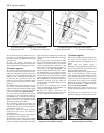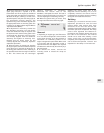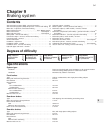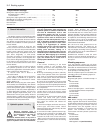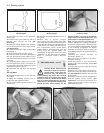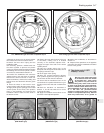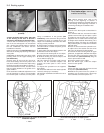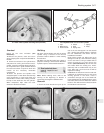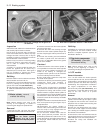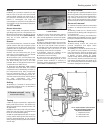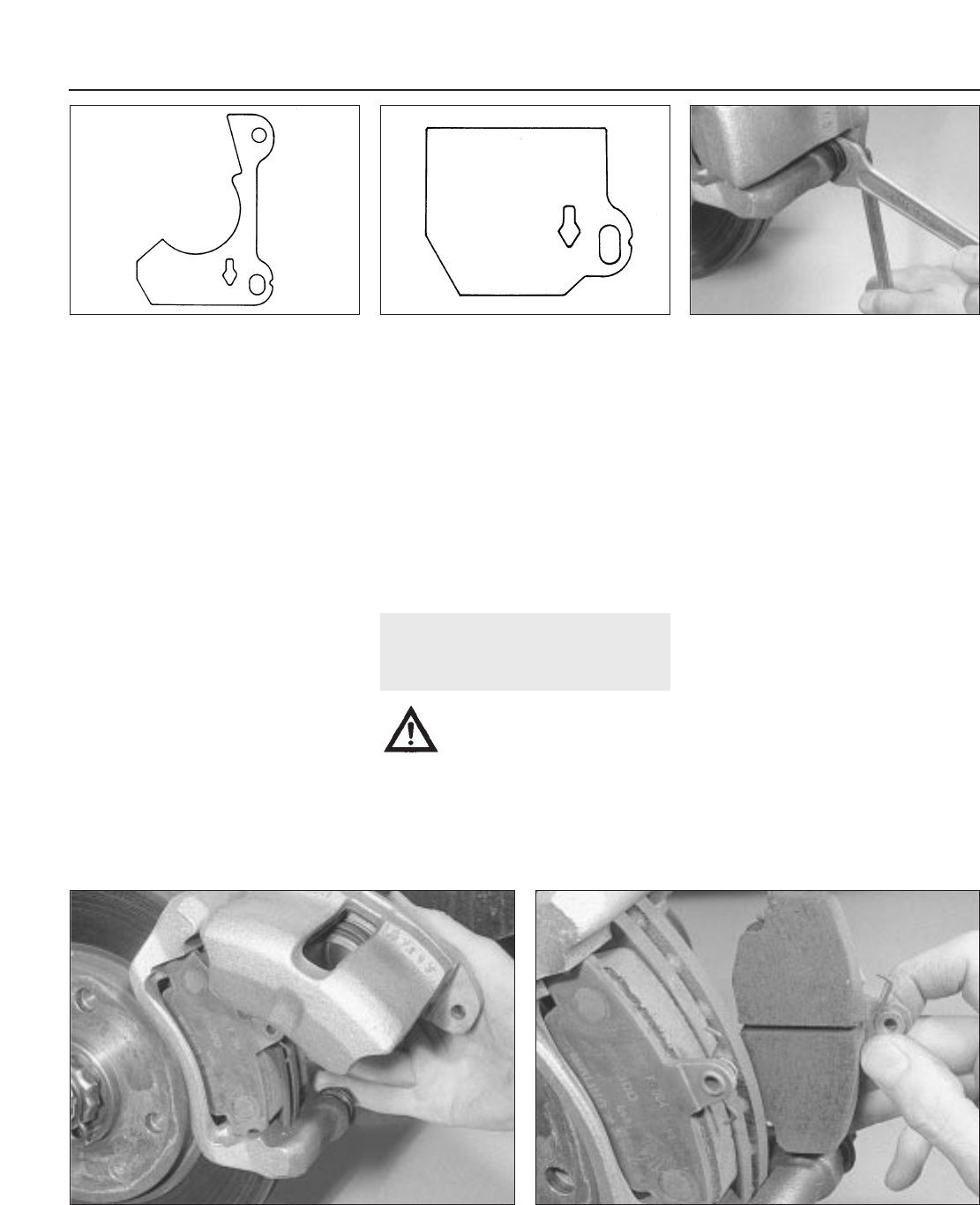
18 Disconnect the wire for the pad wear
warning light.
19 Hold the lower guide stationary with one
spanner, then unscrew the bolt (see
illustration).
20 Swivel the caliper upwards, then withdraw
the two brake pads from the caliper bracket
(see illustrations).
21 Clean and check the caliper, as described
in paragraph 7.
22 Push the piston fully into the cylinder.
23 Clean the backs of the pads, and apply a
little anti-squeal brake grease. Refit the inner
pad (with the pad wear warning wire), then the
outer pad.
24 Lower the caliper. Apply locking fluid to
the lower guide bolt, insert it, and tighten to
the specified torque while holding the guide
stationary with another spanner.
25 Reconnect the pad wear warning light
wire.
All calipers
26 Repeat the operations on the opposite
disc caliper.
27 Apply the footbrake several times to
position the pads against the discs.
28 Top-up the master cylinder reservoir to its
correct level.
29 Refit the roadwheels and lower the car to
the ground.
30 Note that if genuine Peugeot
replacements have been fitted, these pads
have a thin coating of abrasive material, which
cleans the disc during the initial applications
of the brakes. This coating also removes any
disc imperfections which would cause
steering vibration. After fitting these pads, the
brakes must be applied lightly and
intermittently for the first 3 miles (5 km), then
“bedded-in” for 120 miles (200 km), avoiding
heavy or prolonged braking wherever
possible.
5 Rear brake shoes - renewal
3
Warning: Brake shoes must be
renewed on both rear wheels at
the same time - never renew the
shoes on only one wheel, as
uneven braking may result. Also, the dust
created by wear of the shoes may contain
asbestos, which is a health hazard. Never
blow it out with compressed air, and don’t
inhale any of it. An approved filtering mask
should be worn when working on the
brakes. DO NOT use petrol or petroleum-
based solvents to clean brake parts; use
brake cleaner or methylated spirit only.
Note: The rear brake shoe assemblies may be
of either DBA Bendix or Girling manufacture,
according to model and year. The components
may vary in detail, but the principles described
in the following paragraphs are equally
applicable to both types. Make a careful note
of the fitted positions of all components before
dismantling.
1 Remove the relevant hub/drum as
described in Section 11.
2 Brush the dust and dirt from the shoes,
backplate and drum.
3 Note the position of each shoe and the
location of the return and steady springs (see
illustrations).
4 Unhook and remove the upper return spring
(see illustration).
5 Remove the steady springs using pliers to
depress the outer cups and turn them through
90° (see illustration). Remove the pins from
the backplate.
6 Move the serrated automatic adjuster lever
quadrant against spring tension (see
illustration), move the lever forwards and
release the strut from the top of the shoes
(DBA Bendix type only).
9•6 Braking system
4.14a Early type anti-squeal shim
(Girling caliper)
4.14b Later type anti-squeal shim
(Girling caliper)
4.19 Unscrewing the lower caliper guide
pin bolt (1.9 GTI)
4.20a Swivel the caliper upwards . . . 4.20b . . . then withdraw the two brake pads (1.9 GTI)



